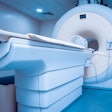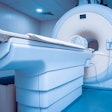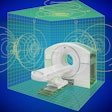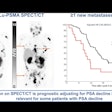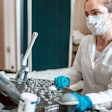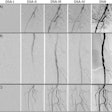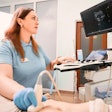
COPENHAGEN (Reuters Health), Jun 16 - Ultrasound is much more accurate than clinical examination for identifying the affected ankle structures in children with juvenile idiopathic arthritis, according to results released at the European League Against Rheumatism (EULAR) Congress 2009.
Dr. Laura Pascoli, a pediatric rheumatologist at Musgrave Park Hospital in Belfast, U.K., and associates compared clinical and ultrasound findings in ankle disease to determine the level of agreement between the two methods in their service.
"Only a few studies have been published on ultrasound in juvenile idiopathic arthritis, and most of them have been limited to knee and hip joints," Dr. Pascoli said.
In a prior retrospective study, her group demonstrated a poor correlation between clinical and ultrasound findings in ankle disease with juvenile idiopathic arthritis, she said. However, no effort was made to clinically identify the structures involved in the ankle region since ankle swelling has usually been assumed to indicate tibiotalar disease.
For the study, 42 children with swollen/painful ankles were clinically assessed by an experienced pediatric rheumatologist and scored for involvement of the main ankle joint, medial tendons, and lateral tendons using a scale of 0 to 3. At the same visit, the ankles were scanned by clinicians experienced in ultrasound who were blinded to the clinical findings.
The analysis showed very poor agreement between clinical and ultrasound scores for the three ankle structures assessed.
"Our results confirm the findings of our earlier retrospective study showing that clinical assessment of the ankle region in children with juvenile idiopathic arthritis is inadequate in identifying the structures involved," Pascoli noted. "In fact, the inadequacy of clinical assessment almost certainly explains the poor response to intra-articular corticosteroid injections in that region."
For children, ultrasound has important benefits over other imaging techniques like x-rays and MRI, since it produces no ionizing radiation and does not require sedation or a general anesthetic, Dr. Pascoli continued. In addition, it can be performed at the same time as clinical assessment. "Thus, an appropriately trained clinician can use it in daily clinical practice in order to establish an accurate diagnosis, guide joint injections, and follow patients in order to assess their treatment response," she added.
Finally, she pointed out that ultrasound assessment prior to any injection in the ankle region is extremely important for improving the efficacy of an intra-articular corticosteroids.
By Jill Stein
Last Updated: 2009-06-15 15:59:15 -0400 (Reuters Health)
Related Reading
Bone health substantially impaired in juvenile arthritis, September 15, 2008
Copyright © 2009 Reuters Limited. All rights reserved. Republication or redistribution of Reuters content, including by framing or similar means, is expressly prohibited without the prior written consent of Reuters. Reuters shall not be liable for any errors or delays in the content, or for any actions taken in reliance thereon. Reuters and the Reuters sphere logo are registered trademarks and trademarks of the Reuters group of companies around the world.






